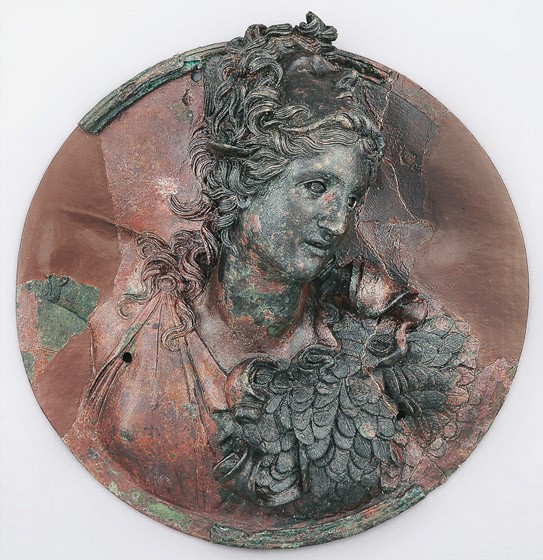Lysippos of Sikyon (c. 390 – 305 BC), the favorite sculptor of Alexander the Great, created 1,500 works in bronze, according to Pliny the Elder (died AD 79). None survive; their existence is known partly from statue bases inscribed with the artist’s name, examples of which can be found in this exhibition. The 3,000 bronze statues that Pliny reported to be on the island of Rhodes have also disappeared. Rows of empty pedestals at Olympia, Delphi, and other sites further attest to the loss of ancient bronze statuary. Of the countless bronzes that once adorned Hellenistic cities and sanctuaries, fewer than two hundred are known today, including heads without bodies and bodies without heads.
Ancient bronze statuary met various fates. Cast from alloys of copper, tin, and lead, bronze is subject to corrosion from oxidation and weather. Statues in poor condition, and those of leaders who fell from favor or of pagan deities in a Christian world, would have been melted down and the bronze reused to make coins, weapons, or new works of art, or for the commercial value of the metal. Other sculptures were lost in transport, the casualties of shipwrecks. Several of the bronzes in this exhibition were chanced upon by fishermen and recovered from the sea floor where many others doubtless still lie, awaiting discovery.
Pictured: Medallion with Athena and Medusa, 200 – 150 BC; bronze and glass. Lent by the Hellenic Ministry of Culture, Education, and Religious Affairs, The Archaeological Museum of Thessaloniki
Previous: Bronze Sculpture of the Hellenistic World | Next: The Hellenistic World
